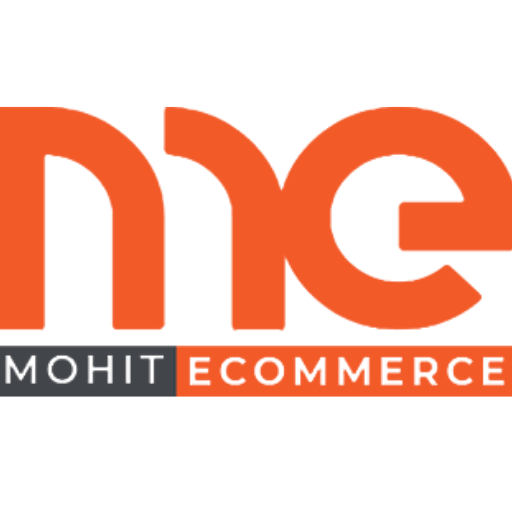To excel in your ecommerce journey, embrace a customized list of best practices for your online store. Begin by understanding the basics, select the appropriate platform wisely, and then concentrate on optimizing for success. Key features like user-friendly navigation and secure payment gateways are essential for customer satisfaction.
Enhance sales with engaging product descriptions, customer reviews, and timely offers. Interactive reviews sections, free shipping options, and exceptional customer service can distinguish you. Stay updated with trends, infuse personality into your brand voice, and network with peers for insights. Seize the opportunity of seasonal sales effectively.
Key Takeaways
- Optimize product pages with high-quality images and reviews for customer engagement.
- Utilize limited-time offers and free shipping to boost sales and customer loyalty.
- Implement interactive review sections to enhance trust and credibility with customers.
- Prioritize customer service practices like prompt responses and personalized interactions.
- Gather customer feedback regularly through surveys, forms, and social media monitoring.
Understanding the Basics of an Ecommerce Online Store

When delving into the world of online retail websites, understanding the fundamental concepts that support this digital marketplace is vital. Online stores function as virtual storefronts where businesses offer their products or services through the internet.
Serving as the backbone for these online stores, ecommerce platforms provide the necessary tools and features to facilitate online sales. Grasping how these platforms operate and how to utilize their capabilities is essential for running a successful online retail business.
In the domain of online sales, ecommerce platforms have a critical role in managing inventory, processing payments, and interacting with customers. These platforms provide a variety of functionalities, including customizable storefronts, secure payment gateways, and analytics tools to monitor sales performance. By becoming familiar with how ecommerce platforms function, you can streamline your online retail operations and enhance the overall shopping experience for your clientele.
To thrive in the competitive landscape of online retail, staying informed about the latest trends and technologies that influence the industry is crucial. Through continuous learning and adapting your strategies, you can optimize your online store for success in the constantly evolving digital marketplace.
Choosing the Right Platform for Your Ecommerce Online Store

To establish a successful ecommerce online store, selecting the right platform is a pivotal decision that can greatly impact your business’s growth and profitability. With numerous platforms available, it’s essential to choose one that aligns with your specific needs and goals. Consider factors like ease of use, customization options, scalability, pricing, and integrations when evaluating different platforms for your online store.
| Platform | Ease of Use | Customization | Scalability | Pricing |
|---|---|---|---|---|
| Shopify | High | Extensive | High | Monthly |
| WooCommerce | Medium | Flexible | High | Free |
| BigCommerce | High | Moderate | High | Monthly |
| Magento | Low | Extensive | High | Free/Open |
| Wix | High | Limited | Medium | Monthly |
Each platform has its unique features and strengths, so take the time to research and test them to find the one that best suits your online store’s requirements. Remember, the right platform can provide a solid foundation for your ecommerce business to thrive.
How to Optimize Your Ecommerce Online Store for Success?
To drive your ecommerce online store towards success, strategic optimization is vital. Start by focusing on enhancing the customer experience. Guarantee your online store is user-friendly, with easy navigation and a seamless checkout process to boost sales.
Optimize your product pages with high-quality images, detailed descriptions, and customer reviews to build trust and drive conversions. Utilize data analytics to understand customer behavior, preferences, and trends, allowing you to tailor your offerings and marketing strategies accordingly.
Another critical aspect of optimizing your online store is to prioritize mobile responsiveness. With an increasing number of customers shopping on their smartphones, a mobile-friendly design is crucial for capturing sales. Moreover, optimizing your website for search engines will help drive organic traffic and improve your online visibility. Regularly update your online store with fresh content, promotions, and seasonal sales to keep customers engaged and encourage repeat purchases. Through continuously refining and optimizing your ecommerce online store, you can maximize its potential for success.
Essential Features for Every Ecommerce Online Store

To propel your ecommerce online store towards peak performance, integrating key features is essential. Here are three important features that every online business should incorporate to enhance the customer experience and drive sales
- User-Friendly Navigation: Online retailers must make sure that their website is easy to navigate, with clear categories, search functionality, and a seamless checkout process. A user-friendly interface enhances the shopping experience and encourages customers to explore more products.
- Mobile Optimization: With the increasing number of shoppers using mobile devices, it is vital for online stores to be optimized for mobile. Responsive design, fast loading times, and mobile-friendly payment options are important features to cater to this growing segment of customers.
- Secure Payment Gateway: Building trust with customers is crucial for any online business. Implementing a secure payment gateway that encrypts sensitive information provides peace of mind to customers when making transactions, leading to increased sales and customer retention.
5 Key Strategies for Increasing Sales in Your Ecommerce Store
To boost sales in your ecommerce store, focus on enhancing your product descriptions, utilizing high-quality images, and incorporating customer reviews to build trust. Creating a sense of urgency through limited-time offers and providing free shipping options can also drive conversions. Implementing these strategies can help you attract more customers, encourage repeat purchases, and ultimately increase your online sales.
1. Improve Product Descriptions
Enhance your ecommerce store’s performance through focusing on refining your product descriptions. When it comes to online shopping, compelling product descriptions are essential for converting visitors into customers. To improve your sales and create a better shopping experience, consider the following strategies:
- Use Descriptive Language: Craft product descriptions that vividly depict the item, highlighting its features, benefits, and potential uses. Be sure to include relevant keywords for SEO optimization.
- Focus on Benefits: Instead of just listing features, explain how the product can enhance the customer’s life. Help them visualize how owning the product will make a difference for them.
- Tell a Story: Engage your audience by weaving a narrative around the product. Share its origins, unique selling points, or how it addresses a problem. Create an emotional connection that resonates with your customers.
2. Use High-Quality Images
High-quality images are vital in the success of your ecommerce store. When it comes to product images, they play a pivotal role in creating high-converting product pages. Users rely heavily on visuals to make purchasing decisions, so providing clear, detailed, and visually appealing images of your products is crucial. Ensuring that your images maintain high quality enhances the overall user experience on your website.
Investing in professional photography or utilizing high-resolution images can greatly impact your online store’s performance. Customers are more likely to trust and engage with your products when they can see them clearly. These images not only display your products but also demonstrate the quality and professionalism of your brand. Keep in mind, the objective is to create an immersive and satisfying shopping experience for your customers, and high-quality images are a fundamental element in achieving that. Prioritizing product images can enhance your store’s visual appeal and drive more sales.
3. Implement Customer Reviews
With the ever-changing landscape of online shopping, utilizing customer reviews has become a strategic necessity for driving sales in your ecommerce store. Customer reviews play a vital role in building trust, enhancing credibility, and influencing purchase decisions. Here are three key strategies for effectively implementing customer reviews in your online store:
- Interactive Review Sections: Encourage customers to leave detailed reviews by providing interactive elements like star ratings, comment sections, and the option to upload images or videos of the product they purchased.
- Highlight Positive Feedback: Feature positive customer reviews prominently on your product pages to reassure potential buyers about the quality and satisfaction levels associated with your products.
- Respond to Reviews: Engage with customers by replying to their reviews, whether they are positive or negative. This showcases your dedication to customer satisfaction and helps establish a strong connection with your audience, ultimately enhancing trust in your ecommerce business.
4. Create Urgency with Limited-Time Offers
To effectively drive sales and create a sense of urgency in your ecommerce store, implementing limited-time offers is a key strategy that can greatly boost conversions and revenue.
Offering limited-time deals, you can create a sense of urgency among your customers, compelling them to make a purchase decision quickly before the offer expires. This tactic not only increases sales but also helps in clearing out excess inventory and generating buzz around your products.
Creating urgency with limited-time offers can be done through various means such as flash sales, countdown timers on product pages, or exclusive discounts for a short period.
These strategies tap into the psychological aspect of urgency, prompting customers to act swiftly to take advantage of the offer before it’s gone. Moreover, limited-time offers can help in attracting new customers, retaining existing ones, and increasing customer loyalty by providing them with value and a sense of exclusivity. Incorporating this strategy into your ecommerce store can lead to a significant boost in sales and revenue.
5. Offer Free Shipping Options
As you continue to optimize your ecommerce store for maximum sales impact, offering free shipping options emerges as a strategic imperative in today’s competitive online market. Online shoppers are more likely to complete their purchases if they see free shipping options available. Here are three compelling reasons why incorporating free shipping options can boost your online sales:
- Reduce Abandoned Carts: High shipping costs are one of the main reasons for cart abandonment in online shopping. When offering free shipping options, you can eliminate this barrier and encourage customers to finalize their purchases.
- Increase Average Order Value: Studies have shown that customers tend to spend more when free shipping is provided. Setting a minimum order value to qualify for free shipping can motivate customers to add more items to their carts.
- Competitive Advantage: In a market where many online stores offer free shipping options, not providing this benefit can put you at a disadvantage. Differentiate yourself from the competition and attract more customers by making free shipping a part of your strategy.
10 Best Practices for Customer Service in Ecommerce
When it comes to excelling in customer service for your ecommerce store, responding promptly to inquiries, personalizing customer interactions, and making returns easy are key strategies. Utilizing live chat support and regularly gathering customer feedback can further enhance your customer service efforts. Through focusing on these practices, you can build trust, loyalty, and satisfaction among your customers, ultimately leading to increased sales and growth for your online business.
1. Respond Promptly to Inquiries
Upon receiving inquiries from customers, responding promptly is a crucial element of maintaining exceptional customer service in an ecommerce setting. Prompt responses not only enhance the customer experience but also build trust and loyalty. Here are three key strategies to help you excel in this aspect:
- Automate Responses: Utilize automated responses to acknowledge customer inquiries instantly, letting them know their message has been received and will be addressed swiftly.
- Establish Clear Response Times: Set clear expectations for response times on your website or communication channels to manage customer inquiries effectively and ensure timely resolutions.
- Train Customer Service Team: Provide thorough training to your customer service team on how to respond promptly while maintaining a high level of service quality. Empower them to handle common inquiries efficiently to enhance the overall customer experience.
2. Personalize Customer Interactions
Amid the dynamic landscape of ecommerce, personalizing customer interactions stands as a pivotal strategy for fostering strong relationships and driving business growth. In your ecommerce online store, the art of personalization can greatly enhance the overall customer experience. Tailoring interactions based on customer preferences, purchase history, and behavior can create a sense of individualized attention that resonates with your audience.
Enhancing customer interactions, you can deepen customer loyalty and increase repeat purchases. Utilize customer data to send personalized recommendations, exclusive offers, and targeted marketing campaigns. Implementing personalized product suggestions or customized content on your website can enrich the shopping experience and drive conversions.
Furthermore, leveraging personalized communication channels such as personalized emails or messages can create a more engaging and memorable interaction with your customers. Understanding their needs and preferences, you can build a stronger rapport and foster long-term relationships that lead to increased customer satisfaction and loyalty in your ecommerce journey.
3. Make Returns Easy and Convenient
To excel in the world of online selling, one of the key pillars of exceptional customer service lies in the ease and convenience of returns. Ensuring that your return process is straightforward and hassle-free can greatly impact customer satisfaction and loyalty. Here are three ways to make returns easy and convenient for your customers:
- Clear Return Policy: Have a transparent and easily accessible return policy on your website. Clearly outline the steps customers need to take to return items, including any associated costs or timelines.
- Prepaid Return Labels: Provide prepaid return labels to simplify the return process for your customers. Including these labels in the original shipment can make it convenient for customers to send back items they are not satisfied with.
- Multiple Return Options: Offer various return options such as in-store returns, drop-off locations, or mail-in returns. Providing multiple avenues for returns gives customers the flexibility to choose the most convenient method for them.
4. Use Live Chat Support
Engaging with customers in real-time can be a game-changer for your ecommerce business. Integrating live chat support on your online store can offer immediate assistance to customers, enhancing their shopping experience and boosting satisfaction levels. Live chat support allows you to address customer queries, provide product recommendations, and resolve issues promptly, all of which can lead to increased sales and customer loyalty.
Having live chat support on your online store is a proactive approach to customer service, demonstrating your dedication to assisting customers throughout their buying journey. It offers a personalized touch that can differentiate you from competitors and build trust with your audience. Moreover, the real-time nature of live chat support enables you to gather valuable insights into customer preferences and pain points, aiding you in making informed decisions to enhance your online store and overall customer experience.
Incorporating live chat support into your customer service strategy can have a significant impact on your online store’s success, driving conversions and nurturing long-term relationships with your customers.
5. Gather Customer Feedback Regularly
When seeking to enhance your ecommerce business’s customer service strategy, one key aspect that should not be overlooked is the regular gathering of customer feedback. This valuable information can provide insights into customer satisfaction levels, areas for improvement, and potential new opportunities. Here are three innovative ways to gather customer feedback for your online store:
- Interactive Surveys: Create engaging surveys that pop up after a customer completes a purchase or visits your website. Keep the questions concise and relevant to encourage participation.
- Feedback Forms: Include easy-to-use feedback forms on your website where customers can share their thoughts, suggestions, and concerns. Make sure to respond promptly to show that you value their input.
- Social Media Listening: Monitor social media platforms for mentions of your brand and gather feedback from comments, messages, and reviews. Engage with customers online to show that you are actively listening and addressing their needs in the ecommerce domain.
6. Provide Comprehensive FAQs
As you continually refine your customer service approach within your ecommerce domain, ensuring that your online store is equipped with a thorough set of FAQs stands out as a pivotal strategy.
Providing detailed FAQs on your online store can greatly enhance the customer experience and reduce the burden on your support team. Through anticipating common questions and addressing them proactively, you not only save time for both your customers and staff, but also showcase your commitment to transparency and efficiency.
For ecommerce businesses, having a well-organized FAQ section can help increase customer trust and loyalty. Make sure to regularly update and expand your FAQs based on customer feedback and inquiries. Utilize analytics to identify trends in customer questions and tailor your FAQs accordingly. In addition, consider including multimedia elements such as videos or infographics to make complex information more digestible for customers.
7. Train Your Staff Well
How can you guarantee excellent customer service in your ecommerce business? Training your staff well is essential for ensuring customer satisfaction. As business owners, investing in staff training can have a significant impact on the success of your online store. Here are three key strategies to help you train your staff effectively:
- Interactive Workshops: Organize interactive training sessions where staff can engage with the material actively. This will not only enhance their learning experience but also improve retention of important information.
- Role-Playing Scenarios: Conduct role-playing exercises to simulate real customer interactions. This hands-on approach can help staff practice handling various customer service situations effectively.
- Continuous Education: Provide ongoing education and skill development opportunities for your staff. Regular training sessions and access to resources will enable them to stay updated on the latest trends and best practices in customer service.
8. Offer Multiple Contact Methods
To optimize customer service in your ecommerce business, offering multiple contact methods is crucial. Your audience values convenience, so providing various ways for them to reach out enhances their experience. When selecting contact methods, consider your target market and the online channels they frequent. Including options such as live chat, email support, phone assistance, and social media messaging caters to different preferences and guarantees you can connect with customers on their preferred platform.
9. Follow Up After Purchases
Coming off the heels of optimizing customer service through multiple contact methods, the next step in excelling at ecommerce lies in the art of following up after purchases. When it comes to ensuring customer satisfaction and building loyalty, your follow-up game needs to be exceptional. Here are three key strategies to master the art of post-purchase follow-ups:
- Personalized Thank You Emails: Send a personalized thank you email after every purchase, expressing gratitude for their business and including helpful information or resources related to their purchase.
- Request Feedback: Ask for feedback on their shopping experience and the product purchased. This not only shows that you value their opinion but also provides insights for improvement.
- Offer Exclusive Discounts: Include exclusive discounts or promotions in your follow-up emails to encourage repeat purchases and show appreciation for their loyalty.
10. Stay Transparent About Shipping
For successful ecommerce operations, one crucial aspect that can make or break the customer experience is being transparent regarding shipping details. When managing your online store, transparency in relation to shipping is key to building trust with your customers. Clearly communicate shipping costs, delivery times, and any potential delays. Be upfront regarding any restrictions or additional fees, ensuring customers have all the necessary information before making a purchase. Providing real-time tracking information for orders can also enhance the customer experience and reduce inquiries about shipment status.
Transparency in shipping not only fosters trust but also sets realistic expectations for customers. Clearly outlining your store’s shipping policies and procedures can help prevent misunderstandings and reduce the likelihood of customer dissatisfaction.
By upfront about shipping processes, you demonstrate reliability and professionalism, which can lead to repeat business and positive reviews. Remember, in the world of ecommerce, honesty and clarity in shipping practices go a long way in establishing a loyal customer base.
How MohitEcommerce Can Enhance Your Ecommerce Online Store?
Enhancing your ecommerce online store with MohitEcommerce can revolutionize the way you do business. Integrating this platform can streamline your operations, improve customer experience, and boost sales. Here are three ways MohitEcommerce can enhance your ecommerce online store:
- Efficient Management: MohitEcommerce offers robust tools for managing your ecommerce website, making it easier to list products, track inventory, and process online transactions seamlessly.
- Enhanced User Experience: With MohitEcommerce, you can create a user-friendly interface that simplifies the shopping experience for your customers, leading to higher conversion rates and increased customer satisfaction.
- Advanced Analytics: Utilize MohitEcommerce’s analytics features to gain valuable insights into customer behavior, sales trends, and product performance. This data-driven approach can help you make informed decisions to optimize your online store for better results.
Incorporating MohitEcommerce into your ecommerce strategy can propel your online store to new heights, setting you apart from the competition and driving growth in your business.
Creating an Effective Marketing Strategy for Your Online Store

To establish a strong foothold in the competitive ecommerce landscape, crafting an effective marketing strategy for your online store is crucial. Your online store’s success relies heavily on how well you promote your products or services to potential customers. A well-thought-out marketing strategy can help you reach your target audience, increase brand awareness, and drive sales.
To create an effective marketing strategy for your online store, start by defining your goals and target market. Understand your customers’ needs and preferences to tailor your marketing efforts accordingly. Utilize various digital marketing channels such as social media, email campaigns, search engine optimization (SEO), and pay-per-click advertising to reach a wider audience.
Consistency is key when implementing your marketing strategy. Regularly analyze your campaigns’ performance, track metrics, and adjust your approach based on the data collected. By staying agile and adapting to market trends, you can ensure that your marketing efforts remain effective in driving traffic and boosting conversions for your online store.
Leveraging Social Media for Your Ecommerce Business
In the ever-evolving domain of ecommerce, mastering the art of leveraging social media for your online business is akin to accessing a treasure trove of opportunities. To truly harness the power of social media platforms for your ecommerce success, consider the following:
- Engage with Your Audience: Interacting with your potential customers on social media builds trust and loyalty. Respond promptly to messages and comments, run polls or contests, and share user-generated content to foster a sense of community.
- Utilize Visual Content: Visuals are key in capturing attention on social media. Invest in high-quality images and videos to showcase your products in an appealing way. Platforms like Instagram and Pinterest can be particularly effective for visually-driven content.
- Data-Driven Approach: Analyze the insights provided via social media platforms to understand your audience better. Use this data to refine your strategies, target specific demographics, and optimize your content for maximum reach and engagement.
The Importance of SEO for Ecommerce Success
How important is it for your ecommerce business to rise above the digital clutter and secure a prominent online presence? The answer lies in the domain of search engine optimization (SEO). Implementing strong SEO strategies can greatly impact your online visibility, driving more traffic to your website and ultimately boosting conversion rates. Optimizing your website for search engines enhances its chances of appearing at the top of search results, increasing the likelihood of attracting potential customers.
SEO is not just about keywords; it involves a holistic approach that covers content quality, website structure, mobile-friendliness, and more. The goal is to make your online store easily discoverable to search engines and user-friendly for visitors. This, in turn, can lead to improved online transaction processing and higher conversion rates. Investing in SEO is a crucial component of establishing a successful ecommerce business in today’s competitive digital landscape.
Analyzing Data and Metrics to Improve Performance
Among the arsenal of tools available to ecommerce entrepreneurs seeking to elevate their online store’s performance, the practice of analyzing data and metrics emerges as a crucial pillar. Through delving into data analysis and metrics, you can uncover valuable insights that can guide strategic decision-making and boost your online store’s performance significantly. Here are three key ways in which analyzing data and metrics can help improve your ecommerce store’s performance:
- Identifying Trends: Data analysis allows you to pinpoint patterns and trends in customer behavior, enabling you to tailor your marketing strategies and product offerings accordingly.
- Optimizing Conversions: When analyzing metrics related to conversion rates and customer journey, you can identify areas for improvement and optimize your website for better performance.
- Personalizing Customer Experience: Leveraging data analysis, you can create personalized experiences for your customers based on their preferences and behavior, leading to increased engagement and loyalty.
Harnessing the power of data analysis and metrics is crucial for fine-tuning your ecommerce store’s performance and staying ahead in the competitive online landscape.
How to Build an Engaging User Experience?
Within the domain of ecommerce, crafting an engaging user experience is not merely a goal but a strategic imperative that can set your online store apart from the competition. To build an engaging user experience, consider the following key strategies:
| Key Strategies | Description | Benefits |
|---|---|---|
| 1. Intuitive Navigation | Design easy-to-use navigation menus for seamless browsing | Enhanced user satisfaction and increased conversions |
| 2. Visual Appeal | Utilize high-quality images and videos to captivate users | Improved engagement and brand perception |
| 3. Personalization | Tailor product recommendations and content to individual users | Increased customer loyalty and repeat purchases |
Managing Inventory Efficiently in Your Ecommerce Store
Efficiently managing inventory in your ecommerce store is a cornerstone of operational success. In the fast-paced world of online retail, staying on top of your inventory is pivotal to meeting customer demands and maximizing profits. Here are three key strategies to help you streamline your inventory management in your online store:
- Implement Automated Inventory Systems: Utilize inventory management software that integrates with your online store to track stock levels, receive alerts for low inventory, and automate reordering processes.
- Utilize SKU Codes and Barcoding: Assign unique SKU codes to each product and use barcoding systems to efficiently track and manage your inventory, reducing errors and improving overall accuracy.
- Forecast Demand and Optimize Stock Levels: Analyze sales data to predict demand trends, adjust stock levels accordingly, and avoid overstocking or stockouts, ensuring a healthy balance between supply and demand in your ecommerce business.
Securing Your Ecommerce Online Store

To safeguard your ecommerce online store from potential threats and guarantee the protection of sensitive customer data, implementing robust security measures is essential. With the rise of online marketplaces and e-commerce websites, ensuring the security of your payment gateway is vital to maintaining customer trust and loyalty.
Start using secure socket layer (SSL) certificates to encrypt data transmitted between your website and customers. Regularly update your e-commerce platform and plugins to patch vulnerabilities that hackers could exploit.
Implement multi-factor authentication to add an extra layer of protection against unauthorized access. Conduct regular security audits and penetration testing to identify and address any weaknesses in your online store’s defenses. Maintaining a proactive and vigilant approach in securing your e-commerce site can help you build a reputation for reliability and trustworthiness, fostering long-term relationships with your customers and standing out in the competitive online marketplace.
Building a Brand Voice for Your Ecommerce Store
Crafting a distinct and engaging brand voice is an important aspect of setting your ecommerce store apart in a crowded digital landscape. To build a strong brand voice for your online store, consider the following:
- Know Your Audience: Understanding your target customers’ preferences, values, and communication styles is vital in tailoring your brand voice to resonate with them effectively.
- Consistency is Key: Maintain a consistent tone, language, and messaging across all your online platforms to reinforce your brand identity and establish a cohesive brand voice.
- Inject Personality: Infuse your brand voice with personality and authenticity to connect with your audience on a more personal level, making your ecommerce store more relatable and memorable.
Staying Updated with Ecommerce Trends
Creating a strong brand voice for your ecommerce store is just the start. To truly succeed, you must keep yourself updated with the latest ecommerce trends. Keeping an eye on market demand is essential for your store’s success. Stay updated, you can identify trending products and capitalize on the market demand quickly.
To stay ahead of the curve, regularly research industry trends, consumer behaviors, and emerging technologies. Analyze data from your own store to understand what products are in demand and adjust your inventory accordingly. Subscribe to industry newsletters, attend webinars, and follow thought leaders in the ecommerce space to gain insights into upcoming trends.
Utilize social media platforms to monitor conversations and gather feedback from your customers. Engaging with your audience can provide valuable information on what they are seeking and expecting from your store. By keeping yourself updated with ecommerce trends, you can effectively meet market demand and keep your store competitive in the ever-evolving online retail landscape.
Networking with Other Ecommerce Professionals
Networking with other ecommerce professionals is an essential aspect of staying informed and connected within the dynamic online retail industry. Establishing strong relationships with fellow businesses in the ecommerce domain, you can gain valuable insights, collaborations, and support. Here are three key benefits of networking with ecommerce professionals:
- Knowledge Sharing: Interacting with other ecommerce professionals allows you to exchange ideas, strategies, and best practices. This sharing of knowledge can help you stay ahead of trends and challenges in the industry.
- Collaboration Opportunities: Networking opens doors to potential partnerships and collaborations with complementary businesses. Working together, you can expand your reach, offer bundled services, and tap into new markets.
- Professional Support: Building a network of ecommerce professionals provides you with a support system of like-minded individuals who understand the unique challenges of running an online store. Sharing experiences and seeking advice from peers can help you navigate obstacles more effectively.
Preparing for Seasonal Sales and Promotions
To maximize your ecommerce store’s potential for success, strategic preparation for seasonal sales and promotions is crucial. Planning ahead for seasonal trends and holidays can greatly enhance your revenue and customer engagement.
Commence with analyzing past sales data to pinpoint peak seasons and popular products. Develop a promotional calendar outlining key dates and campaigns for each season. Tailor your marketing strategies to align with the themes of different seasons, offering exclusive promotions or discounts to attract customers.
Collaborate with influencers or partners for seasonal campaigns to expand your reach. Enhance your website for seasonal sales through updating product descriptions, images, and banners to reflect the seasonal spirit. Implement countdown timers or limited-time offers to create a sense of urgency and drive sales.
Monitor and analyze the performance of your seasonal promotions to identify successful strategies for future planning. Through effective preparation for seasonal sales and promotions, you can capitalize on peak periods and optimize your ecommerce store’s success.

